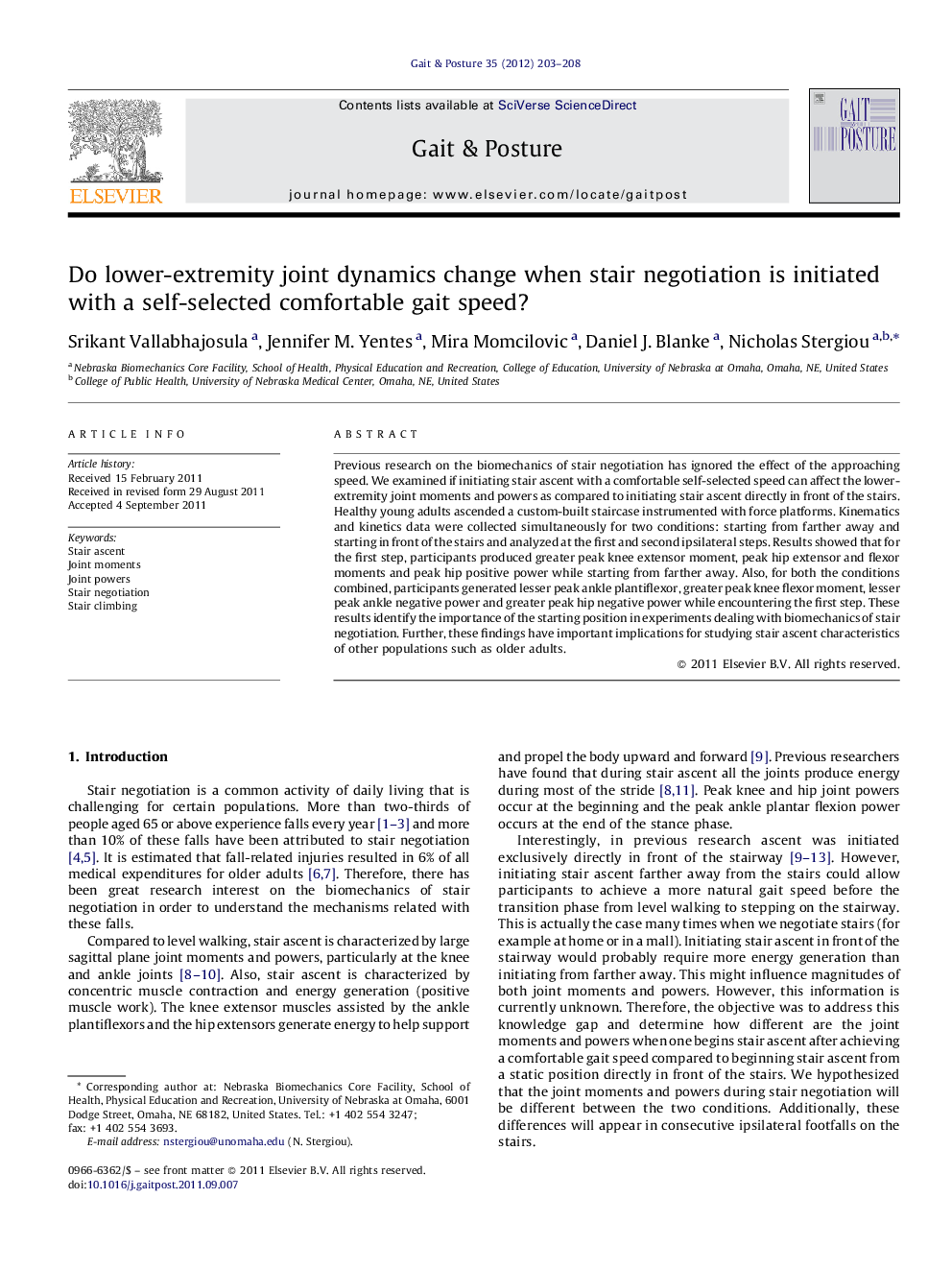| Article ID | Journal | Published Year | Pages | File Type |
|---|---|---|---|---|
| 6208107 | Gait & Posture | 2012 | 6 Pages |
Previous research on the biomechanics of stair negotiation has ignored the effect of the approaching speed. We examined if initiating stair ascent with a comfortable self-selected speed can affect the lower-extremity joint moments and powers as compared to initiating stair ascent directly in front of the stairs. Healthy young adults ascended a custom-built staircase instrumented with force platforms. Kinematics and kinetics data were collected simultaneously for two conditions: starting from farther away and starting in front of the stairs and analyzed at the first and second ipsilateral steps. Results showed that for the first step, participants produced greater peak knee extensor moment, peak hip extensor and flexor moments and peak hip positive power while starting from farther away. Also, for both the conditions combined, participants generated lesser peak ankle plantiflexor, greater peak knee flexor moment, lesser peak ankle negative power and greater peak hip negative power while encountering the first step. These results identify the importance of the starting position in experiments dealing with biomechanics of stair negotiation. Further, these findings have important implications for studying stair ascent characteristics of other populations such as older adults.
⺠Stair ascension starting from afar was compared to starting from near. ⺠Young adults produced greater knee, hip extensor moments when starting from afar. ⺠They also produced greater peak hip positive power when starting from farther away. ⺠Differences were also seen at the first and second ipsilateral steps. ⺠These results show the importance of the starting position in stair-ascent studies.
